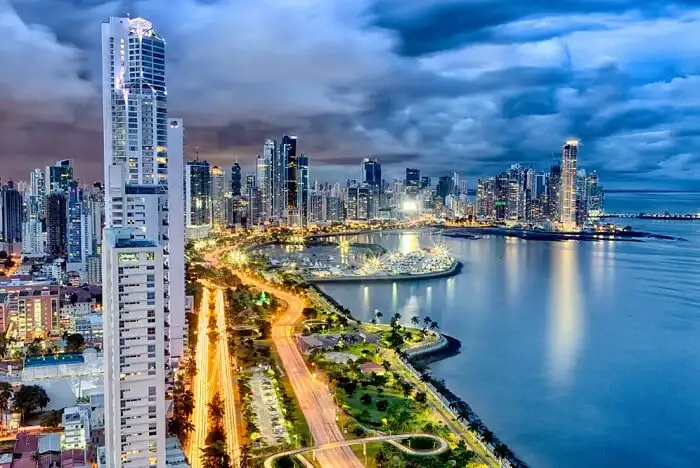Top 10 Most Popular Country in the World – Everything You Need to Know in 2024
India has made a new record by overtaking China and becoming the most popular country in the world, as per the State of World Population Report 2023 by the United Nations Population Fund. The world is a diverse and vibrant place, with different countries and cultures that make it a fascinating place to explore. When it comes to popularity, some countries stand out more than others due to their unique characteristics and attractions.
The top 10 most popular countries in the world are a mix of economic powerhouses, cultural icons, and natural wonders that draw millions of visitors each year. From the bustling streets of the United States to the ancient ruins of Egypt, these countries offer a glimpse into the rich tapestry of human history and achievement. In this topic, we will explore each of these countries and what makes them so popular.
Here is the list of the Top 10 Most Popular Country in the World-
10. Mexico
Population: 128.5 million
Mexico is the tenth most populous country in the world with a population of over 128.5 million people. The population has been steadily increasing over the years due to factors such as natural population growth and immigration. The high population in Mexico presents both opportunities and challenges, including a large workforce, urbanization, and environmental issues such as air pollution and deforestation.
The government has implemented policies to address the issue of population growth, including family planning initiatives and economic reforms. However, the country still faces challenges in providing basic necessities such as healthcare and education to all its citizens.


9. Russian Federation
Population: 144.4 million
The Russian Federation is the ninth most populous country in the world with a population of over 144.4 million people. The population has been relatively stable over the years, with natural population growth offsetting declining birth rates. The high population in Russia presents both opportunities and challenges, including a large workforce, urbanization, and environmental issues such as pollution and climate change. The government has implemented policies to address the issue of population growth, including incentives for families to have more children and promoting immigration. However, the country still faces challenges in providing economic opportunities and improving living standards for all its citizens.
8. Bangladesh
Population: 173 million
Bangladesh is the eighth most populous country in the world with a population of over 173 million people. The population has been steadily increasing over the years due to factors such as high fertility rates, improved healthcare, and increasing life expectancy. The high population in Bangladesh presents both opportunities and challenges, including a large workforce, urbanization, and environmental issues such as water scarcity and pollution.
The government has implemented policies to address the issue of population growth, including family planning initiatives and education programs. However, the country still faces challenges in providing basic necessities such as healthcare, sanitation, and education to all its citizens.


7. Brazil
Population: 216.4 million
Brazil is the sixth most populous country in the world with a population of over 216.4 million people. The population has been steadily increasing over the years due to factors such as natural population growth and immigration. The high population in Brazil presents both opportunities and challenges, including a large workforce, urbanization, and environmental issues such as deforestation and pollution. The government has implemented policies to address the issue of population growth, including family planning initiatives and environmental conservation efforts. However, the country still faces challenges in providing basic necessities such as healthcare and education to all its citizens.
6. Nigeria
Population: 223.8 million
Nigeria is the seventh most populous country in the world with a population of over 223.8 million people. The population has been increasing rapidly over the years due to factors such as high fertility rates, improved healthcare, and decreasing infant mortality rates.
The high population in Nigeria presents both opportunities and challenges, including a large workforce, urbanization, and environmental issues such as deforestation and pollution. The government has implemented policies to address the issue of population growth, including family planning initiatives and education programs, but the population is projected to continue to grow in the coming decades.


5. Pakistan
Population: 240.5 million
Pakistan is the fifth most populous country in the world with a population of over 240.5 million people. The population has been increasing rapidly over the years due to factors such as high fertility rates, improved healthcare, and increasing life expectancy. The high population in Pakistan presents both opportunities and challenges, including a large workforce, urbanization, and environmental issues such as water scarcity and pollution. The government has implemented policies to address the issue of population growth, including family planning initiatives and education programs, but the population is projected to continue to grow for several decades to come.
4. Indonesia
Population: 277.5 million
Indonesia is the fourth most populous country in the world with a population of over 277.5 million people. The population has been steadily increasing over the years due to factors such as high fertility rates, improved healthcare, and decreasing infant mortality rates. The country’s population is concentrated on the islands of Java and Sumatra, which account for over half of the total population. The high population in Indonesia has both positive and negative impacts, including economic opportunities, urbanization, and environmental issues such as deforestation and pollution.


3. United States of America
Population: 340 million
The United States of America is the third most populous country in the world with a population of over 340 million people. The population has been steadily increasing over the years due to factors such as immigration, natural population growth, and increasing life expectancy.
One of the factors contributing to the population growth in the United States is immigration. The country has a long history of welcoming immigrants, and this has led to a diverse population with people from different ethnic and cultural backgrounds. However, the issue of immigration has also been a contentious political issue, with debates over illegal immigration and border control.
The high population in the United States has both positive and negative impacts. On the positive side, the country has a large workforce and a strong economy. However, the rapid population growth also puts a strain on the country’s resources and infrastructure, leading to issues such as traffic congestion, urban sprawl, and environmental degradation.
2. China
Population: 1,425.7 million
China is the most populous country in the world with a population of over 1,425.7 million people. The country’s population has been steadily increasing since the early 20th century, but in recent years, the growth rate has slowed down due to government policies such as the one-child policy, which was implemented in 1979 and was lifted in 2015.
One of the primary reasons for the high population in China is the cultural emphasis on having children. Traditionally, having a large family was seen as a symbol of status and prosperity. However, this cultural belief has been shifting in recent years as the country has modernized, and the government has implemented policies to promote smaller families.
The high population in China has both positive and negative impacts. On the positive side, the country has a large workforce and a growing middle class, which presents significant economic opportunities. However, the rapid population growth also puts a strain on the country’s resources and infrastructure. The increasing population has led to issues such as overcrowding, pollution, and inadequate access to basic necessities such as food, water, and healthcare.


1. India
Population:1,428.6 million
India is a country located in South Asia and is the second most populous country in the world, after China. With a population of approximately 1.428.6 billion people, India accounts for around 17% of the global population. The population of India has been increasing rapidly over the years, and it is projected to continue to grow for several decades to come.
One of the key factors contributing to the population growth in India is the high birth rate. Although the birth rate has been declining over the years, it is still higher than many other countries. The fertility rate in India is around 2.2 births per woman, which is higher than the replacement level of 2.1. The high birth rate is due to a variety of factors, including cultural beliefs, lack of education, poverty, and limited access to family planning resources.
Read More: A Magnificent List of Top 10 Populated Cities in India in 2024


